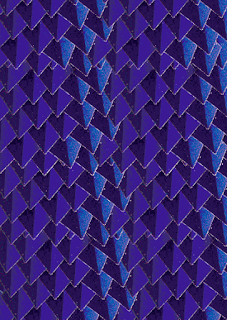Discussion
When we were all meeting people who wanted to do the same briefs as us I got into a Discussing with a fellow peer in graphics, we decided we wanted to collaborate together as we had similar interests but also felt we could learn some individual skills of each other as she was especially good with typography andIi wanted to improve my typography skills.
I also managed to get in touch with an illustrator who came to me about the brief and I introduced her to my collaborative partner, she who has an interest in collaborating on the brief so we thought we could incorporate illustration into this task. When discussing ideas further we decided that an illustrator would not be needed as we wanted to create a typographic card that was possibly gender neutral.
Task
Define what your motivation is for taking under this collaboration?
Because I want to develop my knowledge of understanding when using typography to communicate as well as for aesthetics. I feel this brief will stretch myself to experiment with using different and interesting compositions and typefaces to create successful designs that communicate.
How are you going to communicate amongst your group? Why would they be the best methods?
· Using social media – Facebook, Email, Instagram as we both check our social medias as we both have personal and design accounts.
· Personal – phone number, personal and direct very hard to ignore
· In person – discussing ideas and problems in person in a group, we are in the same class so will be able to talk before and after timetabled sessions as well as out of uni time.
What skills sets does each individual have in your group, and what areas of interest’s do you have the a similar and what areas of interest do you want to learn?
Eve O’Neil – Strengths
· Typography
· Editorial design
· Screen printing
· Digital/ adobe
Learn - wants to learn different practical methods as her work is very limited to purely digital design and flat screen design.
Katie Ayers – strengths
Geometric illustration/illustration
· Editorial design
· Screen printing
· Book binding
· Adobe packages
Learn – I am veryInterested in typography but my typographic work is lacking in experimentation, and learn different ways of using type. By doing so I hope that it will largely improve my work and influence me to work in a more typographic style that takes risks.
What do you want to learn from this process?
I want to expand my knowledge in typography and its uses as well as learn how to work collaboratively in a group, evenly distributing the work and making the most of the other person's skill set.
Ideas
Topic – Gender neutral
Collaborating this project with another graphic designer meant that our way of thinking and tackling a brief was similar which my discussing ideas for the brief go a lot smoother. We decided that we needed to evaluate cards/paper/bags and other accessories that are already on the market so we could gain knowledge of what was missing from the market as well as the type of products and their styles. From carrying out this research we soon realised cards were very much either for a male or for a female orientated and that there was missing a style of cards that did not carry these gender stereotypes. when researching we noticed that a lot of the products looked a lot like they were for women and girls because of the use of script typography, imagery & choice of colours such as pinks, red's and purples. We then looked into products aimed at men, which similarly to women’s products had a common style that was used for most of them, most the designs showed illustrations of beers, cars, and sports with either bold script fonts or bold serif fonts.
Colour scheme ideas
When discussing colour scheme at the early stage it wasn't too difficult as from the research we found the pinks and red's were commonly used for women and blues and greens were used for men, because we had discussed the design bgender-neutralutral the immediate colours we thought of were; Black, white, silver & gold. The reason for silver and gold was to add something that’s not so flat on the card and added a aesthetically pleasing look to it, and the use of the colours silver and gold can come in handy with practical methods such as foiling & screen-printing and will add texture to the products.
UK greetings cards look: Illustrative, colourful, either girly, manly, older generation, immature
7 key aspects to collaboration
1. Motivation – need to feel that they gain something from the collaboration.
2. Communication – project needs to communicate clearly.
3. Diversity – work with people who are in to different ideas of design.
4. Successful- everyone has to have a sense of ownership from what you’ve done, make it clear on your blog what you did in the collaborative group.
5. Support – collaborative needs to work on the trust of others in the group.
6. Problem solving- need to be able to solve problems together in your group.
7. Plan - your time management so you have enough time in all areas of the collaborative brief




















































